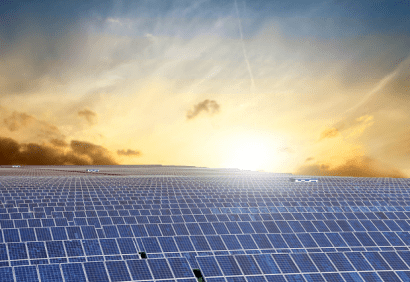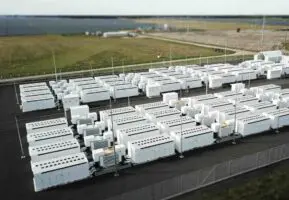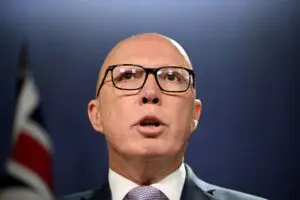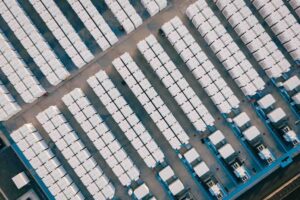The Australian Renewable Energy Agency today announced the 12 large scale projects that won grants in what could be the agency’s last major funding round if most of its remaining monies are stripped by the Coalition and Labor parties.
ARENA shortlisted 20 projects for its $100 million large scale funding round, which was expected to support around 200MW of large scale solar. However, because the competitive tender process achieved such dramatic cost reductions, 12 projects with 480MW were awarded a total of $92 million in grants.
As accurately predicted by RenewEconomy on Wednesday, Infigen Energy, Canadian Solar, Solar Choice and Neoen did well in the tender, and – also as we predicted – the Emu Downs solar plant, the Genex solar-hydro project and the biggest project in the tender, Origin Energy’s Darling Downs, were also selected.

Other winners included the Collinsville power station, which replaces a closed coal-fired generator, and the White Rock solar farm, which will be paired with the 175MW wind farm on the same location.
French group Neoen did best, winning grants for all three of its shortlisted projects, all of which are in western NSW. It adds to the 300MW Hornsdale wind farm it is building after winning contracts with the ACT government. Canadian Solar won with both its projects in Queensland.
Infigen Energy will also push into large scale solar for the first time, winning a grant for its 42.5MW Manildra solar farm in NSW, which will feature First Solar thin film solar technology and single axis tracking. Nine of the 12 projects will eventually feature tracking technology.
All told, there were six projects in Queensland, whose government offered to provide purchase agreements for 150MW of capacity, up from 120MW and 40MW originally, and five in NSW, where the government offered a similar though smaller deal.
One project was in WA but none in Victoria (despite some 11th hour lobbying from the government) and none in South Australia, although the one shortlisted project there insists it will still go ahead to build the world’s biggest solar and storage facility.
Genex said it expects to begin construction of its 50MW solar project, located in an old mine, within the next few months after securing a 20 year power purchase agreement with the state government. It will then add another stage, which will take it to 150MW and then hydro – using the pit of the old mine.

ARENA CEO Ivor Frischknecht said the funding round is expected to unlock almost $1 billion of commercial investment and boost regional Australian economies. Many analysts think it will also trigger other solar developments, which have been awaiting the outcome of the tender, but see the economics of solar coming down quickly.
The average funding required for the projects was just 19c a watt, which was below the 28c/watt revealed in June and the $1.60 a watt needed to build Australia’s first big solar projects. Project costs have fallen 40 per cent since the start of the process.
“This is a very big deal,” Frischknecht said at the media event. “I would never have thought that the cost of solar could fall so far, and so fast.
“We have some of the best solar resources in the world and lead rooftop solar. But Australia has been lagging in large-scale solar deployment. That’s going to change over the next 12 months as a result of ARENA’s large scale solar round.
“We are going to see a massive renewable infrastructure build that will boost jobs and skills in regional Australia. Regional economies will benefit massively from the growing big solar industry, with 2,300 direct jobs and thousands more indirect jobs expected to be created by this round.
“It is now up to successful companies to deliver these projects in line with ARENA’s requirements, which could see all plants built by the end of next year. This is an aggressive timetable to lock in financing, off take arrangements, connection agreements and required approvals.”
Frischknecht said several of the projects are also seeking debt financing for projects through the Clean Energy Finance Corporation’s complementary large-scale solar program.
Frischknecht also defended the role of ARENA, which risks losing most of its remaining funding because of proposed cuts by the Coalition, and a refusal by Labor to continue defending the agency it established in 2012.
Frischknecht said ARENA had been a driving force in bringing down costs and accelerating the commerciality of large-scale solar in Australia.
“As a result of our efforts, the ARENA funding ask for big solar projects has dropped significantly from half of total project costs to just 10 per cent on average. This means that every dollar of ARENA funding is leveraging $10 from other sources in this round.
In his speech, he added: “We are witnessing a rising confidence in large-scale solar technology, a more supportive market for power purchase agreements, more competitive financing, stronger local supply chains and lower construction costs.
“And while I don’t think ARENA is solely responsible for all of that, I do know that it would not have happened nearly as quickly without ARENA.”
He said the competitive tender approach could be adopted to speed up the commercialisation of other renewable energy technologies, such as battery storage, concentrating solar thermal and bioenergy.
“ARENA is not just focused on building more solar. We want to bring down costs faster, fuel growth in Australia’s industry and give the next tranche of projects a head start.
“Australia’s big solar revolution is tantalisingly close and, as more home-grown businesses step up to provide construction, engineering and financial services, this newest tranche of ARENA-supported projects is well positioned to take the sector even closer to commerciality.”










